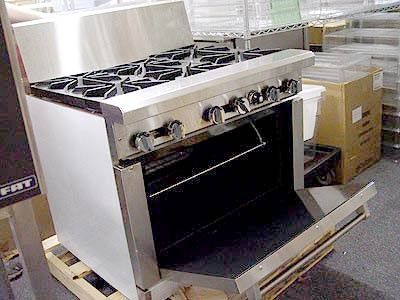Getting the ABCs of Home Plumbing: A Beginner's Overview
Getting the ABCs of Home Plumbing: A Beginner's Overview
Blog Article
What are your thoughts about Plumbing Basics For Every Home: The HomeTriangle Guide?

Plumbing is an essential facet of any home, responsible for providing clean water for alcohol consumption, food preparation, and showering, in addition to removing wastewater safely. Comprehending the essentials of home plumbing is vital for every house owner to guarantee appropriate upkeep, troubleshooting, and, if required, repair work. In this novice's overview, we'll cover the essential ideas of home plumbing to aid you become more knowledgeable about just how it functions.
Water Heating System
The water heater is responsible for home heating water for domestic use, including bathing, cooking, and cleaning. Typical types of water heaters include tank-type hot water heater, tankless (on-demand) water heaters, and heat pump water heaters. The water heater is linked to the water system system and delivers hot water to plumbing fixtures as needed.
Drainage System
The drainage system gets rid of wastewater from your home and brings it away to a sewage treatment center or septic system. It includes a network of pipes, installations, and fixtures that move wastewater from plumbing fixtures to the major sewer line or septic system. Correct water drainage is vital to prevent clogs, backups, and sewage leaks.
Air flow System
The air flow system aids keep correct air pressure and stop drain gases from entering your home. Vent pipes, likewise referred to as vent stacks, extend from plumbing components to the roof, enabling sewage system gases to run away securely outdoors. Ventilation pipes also allow air to get in the water drainage system, promoting smooth wastewater flow and preventing suction or vacuum results.
Water System
The water system system brings tidy water into your home from a municipal water resource or an exclusive well. It includes a major water line that links to your home's plumbing system, normally located underground. A water meter gauges the quantity of water taken in, while a shut-off valve permits you to manage the flow of water right into your home.
Plumbing Fixtures
Plumbing components are gadgets that deliver water to numerous parts of your home and include sinks, faucets, commodes, showers, tubs, and appliances such as dish washers and cleaning equipments. Each component is connected to the water system by means of pipes and installations and may have its shut-off shutoff for maintenance or emergency situations.
Typical Plumbing Devices
Having the right tools accessible is vital for performing standard plumbing repair work and upkeep tasks. Usual plumbing tools consist of flexible wrenches, pipe wrenches, pliers, pipeline cutters, hacksaws, plungers, augers (or drainpipe snakes), and Teflon tape. Having these devices readily offered can aid you deal with small plumbing issues efficiently.
Standard Plumbing Repairs
While some plumbing repairs may require specialist aid, numerous common problems can be addressed with basic DIY methods. Understanding how to take care of a leaking faucet, unclog a drain, change a bathroom flapper, or fix a trickling showerhead can conserve you time and money on plumbing repairs.
Verdict
Recognizing the fundamentals of home plumbing is important for every single home owner to keep a secure, functional, and reliable plumbing system. By familiarizing on your own with the water supply system, plumbing fixtures, water drainage system, ventilation system, usual plumbing tools, and fundamental fixings, you can confidently deal with small plumbing concerns and ensure your home's plumbing system operates efficiently.
Understanding Basics of Home Plumbing System: A Beginner's Guide
The Main Components of Your Home Plumbing System
The Water Supply System
This system is responsible for transporting fresh water into your home. It usually has a main water line that splits into two branches: one directed towards cold water services and the other connected to a water heater for hot water. The pressure is key here; it ensures water reaches all parts of your house.
The Drainage System
Once water has been used, it becomes wastewater that needs to be removed from your home. This is where the drainage system comes into play. It includes all the pipes that carry wastewater and sewage away from your house to sewage treatment facilities or septic tanks.
The Vent System
The vent system prevents sewer gases from entering your home and helps maintain the pressure balance that allows wastewater to flow out properly. These vents usually exit through the roof of your house.
Water Heating System
For those who enjoy hot showers or using hot water for cleaning, the water heater is a crucial part of the plumbing system. It can be a tankless system, which heats water on demand, or a traditional water tank model.
Common Plumbing Problems and Basic Troubleshooting
Plumbing systems, while designed to be durable, can face issues like clogged drains, leaky faucets, or low water pressure. Here are some basic troubleshooting tips:
Clogged Drains
Use a plunger or a plumber's snake to try and dislodge whatever is blocking the drain. Regular cleaning can prevent clogs.
Leaky Faucets
Often caused by worn-out washers or gaskets, these can usually be replaced by someone with basic DIY skills.
Low Water Pressure
This might be due to sediment build-up in your fixtures or a leak somewhere in your water line. Cleaning out aerators or seeking a professional to detect leaks might be necessary.
Preventive Maintenance Tips
Maintaining your plumbing system is key to avoiding emergencies. Regularly check for leaks, avoid disposing of grease down the sink, and have your system inspected by a professional plumber at least once a year.

I ran across that content on Plumbing Basics For Every Home: The HomeTriangle Guide while doing a search on the search engines. Enjoyed reading our write up? Please share it. Help other people find it. Kudos for being here. Come back soon.
Schedule Your Job Now Report this page